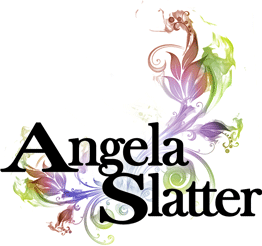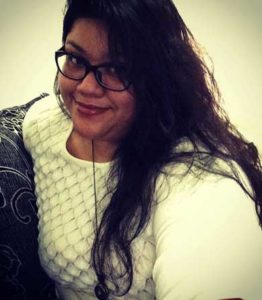 Nin Harris is an author, poet, and Gothic scholar who exists in a perpetual state of unheimlich. Nin writes Gothic fiction, cyberpunk, nerdcore post-apocalyptic fiction, planetary romances and various other forms of hyphenated weird fiction. Nin’s publishing credits include: Clarkesworld, Strange Horizons, and Lightspeed. Nin is currently working on “Watermyth”, the first novel of the Watermaidens Trilogy.
Nin Harris is an author, poet, and Gothic scholar who exists in a perpetual state of unheimlich. Nin writes Gothic fiction, cyberpunk, nerdcore post-apocalyptic fiction, planetary romances and various other forms of hyphenated weird fiction. Nin’s publishing credits include: Clarkesworld, Strange Horizons, and Lightspeed. Nin is currently working on “Watermyth”, the first novel of the Watermaidens Trilogy.
1. First of all, what do new readers need to know about Nin Harris?
- I am a Malaysian author and a poet who has been published in Clarkesworld, Strange Horizons, Lightspeed, Giganotosaurus and various other publications. I’m working on a novel. I’m always working on a novel, it seems.
- My fiction straddles science fiction, fantasy, literary fiction, but all have Gothic or classical underpinnings, and I work mythic, folkloric and classical motifs into most of them, albeit grounded by lived experiences and philosophical underpinnings. I am also of hybrid parentage, with Sri Lankan Tamil, Fuzhou Chinese, Javanese, Boyanese and Middle Eastern blood. People keep asking me “Which do you choose?” I think the answer is something most mixed-race kids shake their head at, and for me, what I write is often a process of discovery. I have written stories that come from lived experience, from epics, from the bits of culture I’ve osmosed from different parts of my heritages. I think it makes me hard to pin down, but I’m okay with that.
2. Which books, either fictional or otherwise, would you say taught you the most about writing? 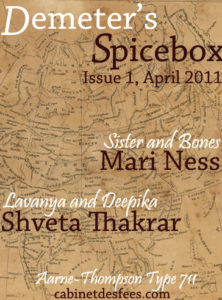
I’ve been a voracious reader from an extremely early age as one of those pesky prodigy type kids (who somehow wind up sheepish underachievers!) so I have read entirely too many books for me to pinpoint with any accuracy. Here are some:
- I’ve been a greedy consumer of fairytales since I was very young. When I was around 4 years old I was staging little plays based on fairytales, starring my stuffed toys and dolls. When I was in the United Kingdom as a kid (we stayed for two years in Edinburgh and later West Kensington), I tore through Andrew Lang’s books, along with Grimm’s fairytales and other compilations. I’d say the blame lies mostly with them. I’ve pretty much osmosed the narrative arcs, the patterns of folklore and fairytales.
- Hikayat Hang Tuah, and SejarahMelayu are two classical Malay epics/romances that also influence a lot of my writing – they taught me to reprogram my brain to think of storytelling in terms of two languages and two separate modalities.
- When I was a teenager, I read Kew Gardens by Virginia Woolf. It broke my mind. It spoke to my synaesthesia. It showed me what could be done with language. It changed the way I wrote. Reading To The Lighthouse, Orlando, and Mrs. Dalloway widened that fracture in my mind. I never recovered!
- Another book that broke my mind as a teen and spoke to my synaesthesia so acutely that I nearly threw up on my first 2 tries at reading it: James Joyce’s Portrait of the Artist As a Young Man. Once I overcame that, I reread the book three times successively. I owe a great debt to the impressionist authors.
- I argue furiously with John Gardner’s books on the craft but my go-to writing book for myself and my creative writing students is still The Art of Fiction.
- I am a literary scholar – and I learn a lot from the books I study and teach. I would say that some of the finest literary craftsmanship can be found in books by Salman Rushdie, Chimamanda Ngozi Adichie, Arundhati Roy, Gabriel Garcia Marquez, Kazuo Ishiguro (I was very taken with The Unconsoled and how he slipped between realism and the fantastic there).
- I’ve always maintained that one of the best teachers of creative writing I’ve had is Angela Carter. I gave three years of my life to studying her fiction for my M.A. dissertation and most of that was short fiction. She is the master of narration, nonpareil.
- Another teacher: Patricia McKillip’s books. I want to be as excellent a writer when I grow up.
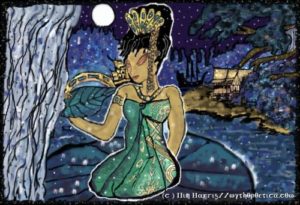 3. What drove you to set up Truancy and Delinquent Spice?
3. What drove you to set up Truancy and Delinquent Spice?
To be honest, I fell into it almost entirely by accident! Erzebet Yellowboy recruited me for Cabinet des Fees and asked me to figure out what rolling content we could slot in-between issues of Scheherezade’s Bequest. I wound out bouncing several hypertext fiction ideas off her (I’ve been playing around with various hypertext projects since 1997), then somehow wound up doing an executive summary and outline for Demeter’s Spicebox. Sometime in 2013, after discussing with her, I decided to strike off on my own and Delinquent’s Spice was created to replace Demeter’s Spicebox. Ironically, I created Truancy to be rolling content in-between issues of DS, but now it’s its own thing – a strange monster that I bring out twice a year.
4. How do you balance your creative life with your academic life?
Very awkwardly, with lots of coffee and periods of acute insomnia.
I used to have a problem with this, during the early days and when I was a PhD student. I’ve managed to find a happy balance somewhere along the line in that I’ve learned to switch between the academic writing brain and the fiction writing brain. More importantly, I’ve learned to let both separate states of mind help each other. It wasn’t easy but it’s doable. I’d be working on an article and an idea about how a certain plot is put together sheds a light on a problem I’m having with a story. When I’m working on a story, I’m suddenly struck by an idea about the process that helps with an article. And so it goes…
5. When you’re in the mood to read, who do you choose?
I read all the time, because it’s my job, and my pleasure. Sometimes I need something fluffy (romances), others, I can only be soothed by philosophy or theoretical physics, I also reread copiously Gothic classics, and my SFF favourites. Right now I’m reading an array of books: George Macdonald’s Lilith, Kazuo Ishiguro’s The Buried Giant, several translations of Malay Hikayats, and Iain M. Banks’s The Hydrogen Sonata. It’s pretty much like this all the time with me!
6. What do you love about fairy tales? 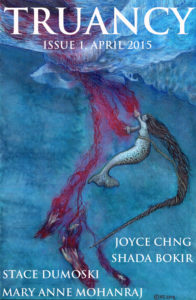
They take me back to a familiar land where trees speak and animals can show you wisdom, and if you undertake all tasks on the road, you will find (sometimes) your happy ending. But I also like dark fairytales – the gristly stuff that frightened me as a kid intrigue me these days because of what they reveal about our nightmares and the human condition.
7. Can you remember the first story you read that made you think “I want to be a writer”?
I was around 7 or 8 years old when I decided I wanted to be a writer, after running through a host of possibilities in my head (a farmer’s wife – before I actually realized what I wanted was to have a farm and be the farmer, a princess, a composer, an orchestra conductor, a ballerina). At some point, I wanted to be a secretary so I could play with typewriters – and then I realized what I really wanted to do was write about all of those characters going off on adventures. I was reading a lot of classical Occidental literary texts. Shakespeare, Dickens, Louisa May Alcott but also heaps of legends and myths – Hang Tuah stories etc. I was also devouring all of Enid Blyton’s Famous Five books AND my father’s medical books. So probably all of them. I don’t know! I was pretty much reading everything!
8. What projects are you working on right now?
Watermyth– the first novel in my Watermaidens Trilogy, a fistful of short stories, a historical fantasy novella set during the time of the Malaccan Sultanate. As an academic, I’m co-writing and editing a book on contemporary Malaysian fiction, and writing another fistful of academic articles related to that grant-funded project.
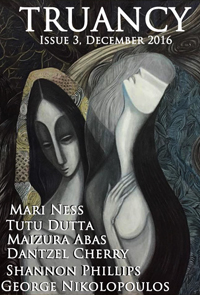 9. You get to invite five fictional characters to dinner: what’s your guest list look like?
9. You get to invite five fictional characters to dinner: what’s your guest list look like?
Schmendrick, from Peter S Beagle’s The Last Unicorn, Tenar, from Ursula K. LeGuin’sEarthsea Quartet, Totoro (I mean, of course!), Aya, from Helen Oyeyemi’s The Opposite House, and Jill, from Katherine Kerr’s Deverry books.
10. What’s next for Nin Harris?
After I finish revising Watermyth, I’m sending it off to try its luck with various agents. While that’s happening, I’m going to start drafting Rosemirror, the second book in the trilogy. Apart from that, I will continue to be a reclusive, obscure, partially mild-mannered Gothic literary academic and author who throws short stories at various publications on a regular basis.
